
This Future of TV Briefing covers the latest in streaming and TV for Digiday+ members and is distributed over email every Wednesday at 10 a.m. ET. More from the series →
This week’s Future of TV Briefing looks at how the AI-generated content feed of Meta’s Vibes could fill the doomscrolling void if TikTok users abandon the U.S. version of the app.
- Vibescrolling
- Fox’s John Fiedler on Fox One’s streaming playbook
- Nexstar’s & Sinclair’s advertiser pushback, TikTok U.S.’s split business, Hollywood’s creator economy conundrum and more
Vibescrolling
On Thursday last week Meta launched Vibes, an AI-generated content feed that somehow doesn’t top the list of dystopia developments in 2025 but is certainly an honorable mention. Also on Thursday, U.S. President Donald Trump signed an executive order to approve a deal that will create a U.S.-only version of TikTok. And that same day I started seeing videos in my TikTok feed of people asking if we’re going to leave TikTok and where are we going.
To be clear, I’m not about to make the case for Vibes as a one-for-one replacement for TikTok. An AI-generated content feed is antithetical to so much of the human-made videos that have made TikTok honestly a bright spot for years, being able to peek into people’s lives, hear what’s on their minds, check out alternative takes on the day’s news or just encounter new music.
But I do think that Vibes (or something like it, such as OpenAI’s new Sora AI video app) can be the new domain for doomscrolling.
Let me explain. Every summer I get to ask teens and twentysomethings about their video-watching habits, and TikTok is usually at or near the top of the list of video platforms they spend the most time on. And invariably, their reason for spending so much time watching TikTok isn’t to stay up on the news or to learn or to connect with others. It’s doomscrolling.
So for anything to fill TikTok’s void, it will need to feed this doomscrolling addiction. And what is doomscrolling? An endless stream of empty entertainment. Could there be a more apt description for a feed of exclusively AI-generated content?
But why would anyone want to consume a feed of AI-generated content? Two reasons.
1. It removes the guesswork that’s become commonplace of having to immediately run any content seen online through the filter of “Is this AI?”
2. AI-generated videos can be entertaining as hell.
Case in point #1: A few years ago, there was a video that popped up in my TikTok feed showing the moon orbiting extremely close to Earth. This was pre-ChatGPT, so I wasn’t yet filtering everything in my feed through “Is this AI?”
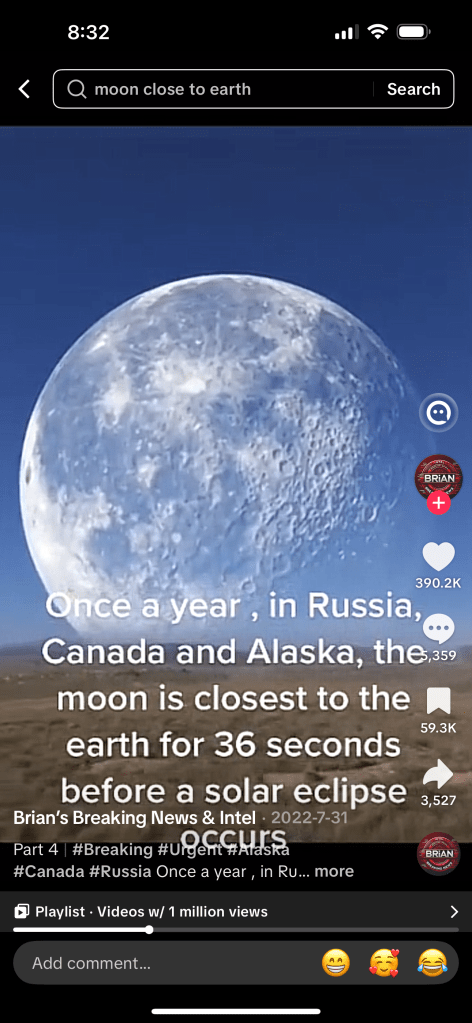
After watching the video on a loop a few times, I started to see the seams. It wasn’t AI-generated, but it wasn’t real either. I decided I didn’t care. It was fun to look at, though realizing it wasn’t real was deflating.
Case in point #2: A series of videos has been popping up in my TikTok feed lately. They show different cars hurtling toward a span of speed bumps and the idea is to see how each car handles the bumps. Will they make it thru or flip onto the median? It’s kinda addictive to watch.
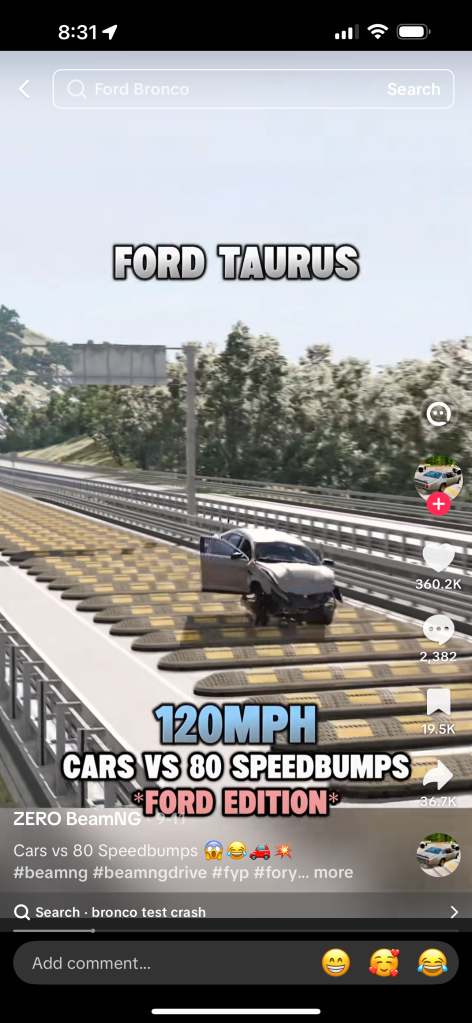
These videos are clearly fake. I thought they were AI-generated, but turns out they’re from a video game called BeamNG.drive. Either way, computer-generated. But most of all, entertaining enough to watch while waiting for the host to join a Zoom meeting.
Which brings us back to Vibes.
The biggest thing Vibes has going for it is that it eliminates that “Is this AI?” pre-processing filter that can preempt the enjoyment of anything online these days. Conceivably, those tags labeling content on Instagram, TikTok, YouTube, etc. as AI-generated would serve the same purpose, but typically you see the content first and then the label, which still has that deflating effect of the moon example. By knowing everything’s AI-generated as soon as you open Vibes, you can give yourself over to the idea that “everything I’m about to see is fake, so let me just enjoy it.” It’s like watching a Marvel movie.
Now, if you haven’t used Vibes, you should know it fails the entertaining test. Which is especially disappointing when you consider that AI can be used to generate anything imaginable, and yet someone decided to just imagine a gorilla yawning.
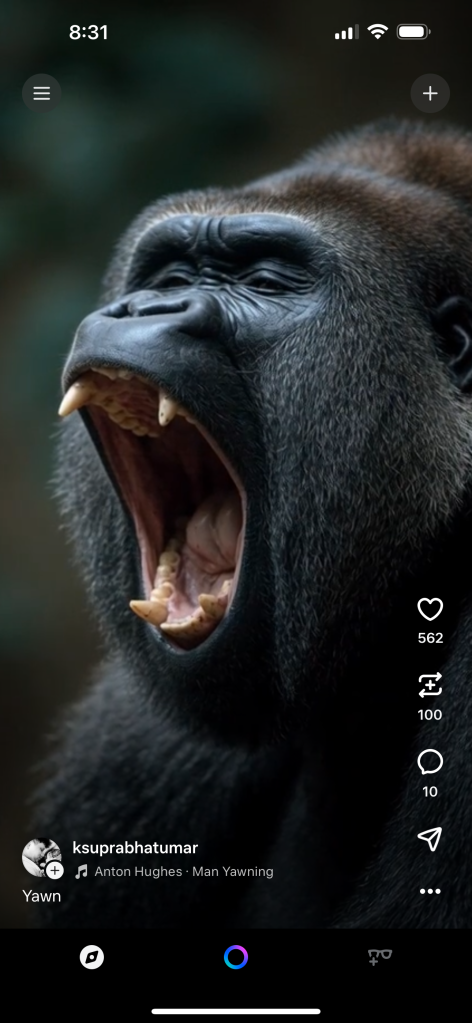
The content I’ve seen on Vibes so far has been purely aesthetic in a way that reminds me of Instagram 13ish years ago when everyone was posting photos of their lunch or the sunset with heavy filters applied. They were nice-looking images, but not much to actually look at.
I mean, many Vibes look like literal Instagram posts.
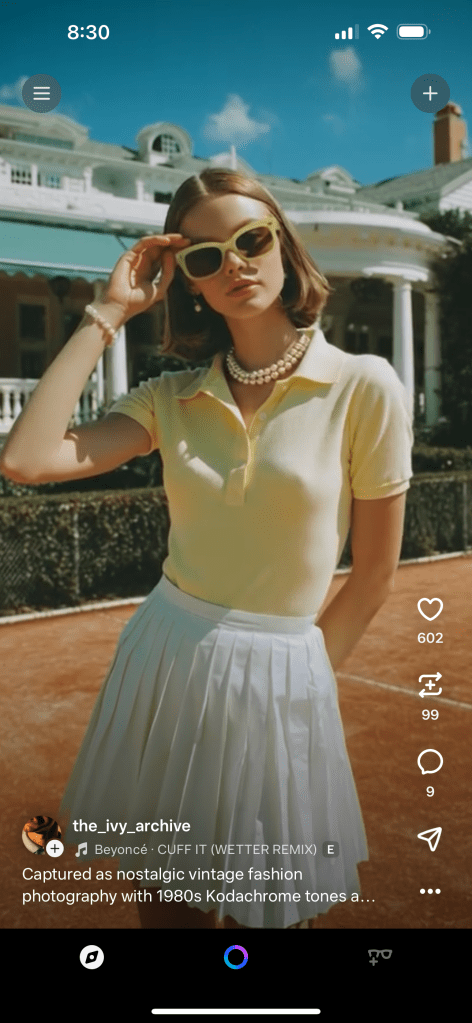
And yet I kept scrolling. Past the dripped-out dancing cat. Past the Viking selfie. Past the English garden and person who can’t type. And eventually I came upon cat kneading dough.
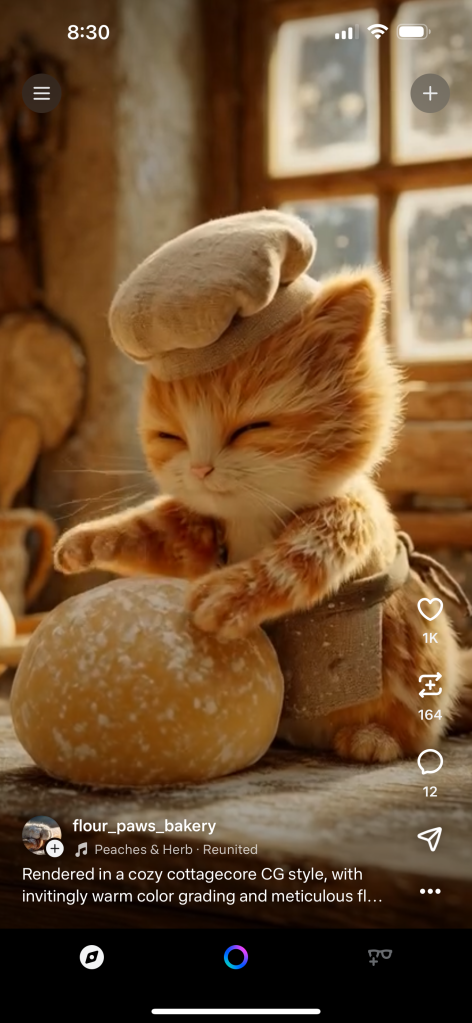
I was transfixed. I spent at least 90 seconds watching that video. It was nice to look at and calming and whatever the visual version of ASMR is. And then I scrolled some more.
What we’ve heard
“We’re not saying you should stop advertising on social. But TV has a place, and so we’re trying to make sure we can remove any of the friction around that.”
— Comcast-owned Universal Ads’ James Borow on its AI-generated ad tool
What we’re watching
Last week’s Future of TV Briefing featured a recap of the Digiday Publishing Summit session with Fox’s John Fiedler, during which he discussed how Fox is building up Fox One by, for example. incorporating AI into its search engine and unifying its ad server. This week I give you the full contents of the session, which is exclusively available to Digiday+ members.
Numbers to know
$24.5 million: How much money YouTube will pay to settle a lawsuit with U.S. president Donald Trump.
>1.7 million: Number of Disney streaming subscriptions that people canceled around the time that the company took “Jimmy Kimmel Live!” off-air.
6.26 million: How many people tuned into Jimmy Kimmel’s return to TV last Tuesday.
14 million: Number of views that Kimmel’s monologue received on YouTube within 15 hours of being uploaded.
50%: Estimated share of TikTok U.S.’s profits that ByteDance will receive.
$2-3: How much Disney will increase the price for most subscription tiers of Disney+ and related bundles.
What we’ve covered
The rise of the creator conglomerate:
- Creator-owned companies are expanding beyond content production to incorporate talent management, live events and consumer product businesses.
- Dhar Mann, Jesser and Smosh are among the creators that have built these multihyphenate businesses.
Read more about creator-owned companies here.
Gen AI creative emerges as new battleground between TV and platforms:
- TV companies are rolling out generative AI ad creation tools aimed at small- and mid-sized advertisers.
- The moves follow efforts to made TV and streaming ad inventory more generally available to smaller advertisers.
Read more about generative AI here.
The New York Times crafts personality-led video in Cooking push to drive subs:
- The Times’ cooking vertical launched a new baking video series in September
- Last year people spent more than 4.3 million hours watching NYT Cooking videos on YouTube
Read more about NYT’s Cooking video strategy here.
Nexxen and Hisense open up smart TV programmatic floodgates:
- Hisense will sell its home-screen inventory through Nexxen’s DSP.
- A lack of standardization with home-screen ad formats can make programmatic sales tricky.
Read more about programmatic TV here.
What we’re reading
Nexstar’s & Sinclair’s advertiser pushback:
After the local TV station owners initially opted not to air “Jimmy Kimmel Live!” when the late-night talk show returned on Tuesday, some advertisers took issue with Nexstar’s and Sinclair’s decision and called into question whether they will advertise with the companies going forward, according to Marketplace.
TikTok U.S.’s split operations:
ByteDance will continue to run the business side of TikTok U.S. — including advertising and e-commerce — while the U.S. joint venture will take control of user data and the algorithm, according to Reuters.
ChatGPT’s parent company will require copyright holders to opt out of their intellectual property appearing in videos created by the next version OpenAI’s Sora AI video-generation tool, according to The Wall Street Journal.
NFL’s next rights negotiations:
Four years after the NFL signed its current 11-year-long rights deals, the league is considering starting up new rights talks, which could allow the NFL to increase its prices and rights holders to secure the TV and streaming market’s most valuable programming, according to CNBC.
Hollywood’s creator economy conundrum:
Traditional entertainment companies and investors remain wary of creator-led companies likely because of legacy failures like Maker Studios and Fullscreen and despite the newer successes like MrBeast and Dhar Mann, according to Bloomberg.
Want to discuss this with our editors and members? Join here, or log in if you're already a member.
More in Future of TV

‘A year of loose ends’: Digiday editors share top takeaways from 2025
This year was filled with major developments – from Netflix’s planned WBD deal to Omnicom’s acquisition of IPG to Google’s ultimately cookie reversal – and Digiday editors Sara Jerde and Seb Joseph help to recap the year that was (and wasn’t).
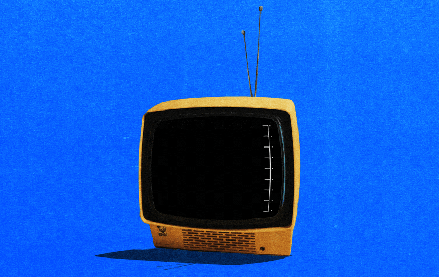
Future of TV Briefing: How the future of TV shaped up in 2025
This week’s Future of TV Briefing looks back at the top topics and trends that overtook the TV, streaming and digital video industries in 2025.
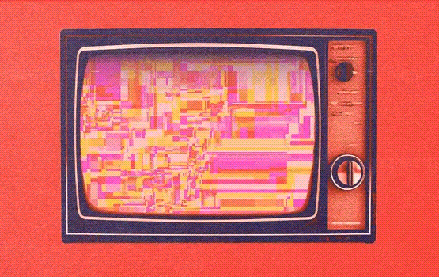
Programmatic agency execs speak out on CTV transparency
At the recent Digiday Programmatic Marketing Summit, agency executives spoke out — on stage and in behind-closed-door town hall sessions — on how they see transparency in CTV.







